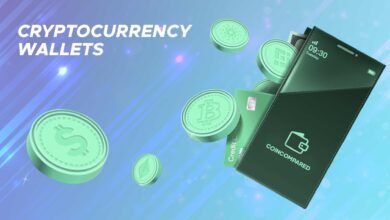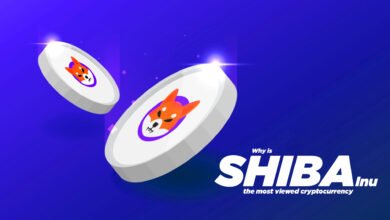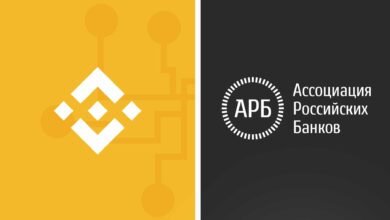
The most well-known cryptocurrency is Bitcoin, but there are thousands of different choices when it comes to these digital currencies. However, Bitcoin always makes the news. In reality, cryptos that aren’t Bitcoin are sometimes seen as “also ran”; they are known as “altcoins,” or Bitcoin alternatives.
Even while Bitcoin may have been the first significant cryptocurrency to enter the market when it initially appeared in 2009, many others have since grown to be very successful, if not nearly as significant as the original.
The largest cryptocurrencies are listed below based on market capitalization, also known as market cap, which measures the total dollar worth of all coins in circulation.
Key Crypto Phrases to Comprehend:
It can be challenging to get around the cryptocurrency world, especially when it seems like everyone is speaking a foreign language.
Discover some of the lingo used most frequently in the Bitcoin and blockchain industries today!
Altcoins:
A cryptocurrency other than Bitcoin is referred to as an altcoin. Each has its own set of laws, characteristics, and particular applications. Altcoins may be forks of current cryptocurrencies or entirely new technology.
All-Time High/ Low:
This is the highest or lowest price that has ever been paid for a specific asset.
Bull Market:
A bull market is characterized as a situation in which market values are typically heading upward over a specific time frame and the general public’s perspective is favorable.
Bear Market:
In contrast to a bull market, a bear market has unfavorable outlooks as market prices appear to be trending lower.
Blockchain
Blockchains are a decentralized means of storing data. On the blockchain, the data can be duplicated and dispersed around the computer network. Blockchains are often run by a group of miners or validators and don’t need a centralized middleman to function.
Block:
Block blockchains are composed of a continuously growing list of transactions that are organized into blocks. Since each block carries a cryptographic reference to the previous one, it is impossible to alter the blockchain’s history.
Block Bonus:
A block reward is given when miners or validators create a block. This takes the shape of freshly created cryptocurrency, which serves as a reward for users that support the continued operation of the blockchain.
Consensus:
In the context of cryptocurrencies, consensus refers to the process through which blockchain users reach a consensus on the contents of the blockchain. Proof-of-work and proof-of-stake are currently employed by crypto networks as their two most prominent consensus procedures.
Cryptography:
The science of information security and privacy is known as cryptography, and it is applied in many aspects of modern computing. The SHA-256 one-way hashing method, which enables Proof-of-Work, and private-key/public-key cryptography, which authenticates and validates bitcoin transfers, both contribute to the security of blockchains and cryptocurrencies.
DApp:
Decentralized applications, or dApps, are software applications that run on top of blockchain networks and make use of smart contracts to give consumers trustworthy tools and services. The Ethereum protocol is currently the smart contract platform with the most adoption.
DAO:
Decentralized autonomous organizations, or DAOs, are organizations that operate as transparent rules in various smart contracts. By allowing the community to vote for or against any proposed modifications or upgrades, they often enable the community to control the future of the DAO and its products while reducing centralization as far as possible.
Decentralized:
The term “decentralized” is used to characterize technologies that leverage dispersed systems to boost security and redundancy while reducing dependency on central authorities and intermediaries.
Defi:
Decentralized Finance, or DeFi, refers to the expanding ecosystem of software and services that employ cryptocurrencies and blockchain technology to offer decentralized financial services to end consumers. There are hundreds of DeFi applications available today that enable users to borrow, lend, and earn interest on cryptocurrencies. These applications are often deployed to the Ethereum network. DeFi applications are composed of several smart contracts that specify the precise procedure and flow of user cash.
Do Your Research (DYOR)
This is frequently used by Bitcoin influencers to caution other investors, reminding us that nothing can replace our research for due diligence. It’s important to keep in mind that media organizations and Bitcoin influencers may have distinct motivations and objectives. Is the news story or review you’re reading factually accurate and unbiased?
ERC-20:
ERC-20 is the most widely used crypto-token standard, and it is utilized on the Ethereum network. It enables programmers to simply generate virtual money that is right away interoperable with the current infrastructure.
ERC-721:
This is the non-fungible token (NFT) standard on the Ethereum network. It enables the production of distinctive, untraceable tokens. It can be used to tokenize real-world unique goods or create digital collectibles and game items.
EVM:
A worldwide blockchain-based computer is essentially what the Ethereum Virtual Machine, or EVM, is. It gives programmers a runtime environment in which to build decentralized, trustless apps for the Ethereum network.
Fiat:
Fiat refers to different forms of money that are used in the conventional financial system. Dollars and euros are two examples of fiat money. Working with fiat money is typical in the blockchain world.
Fork:
A fork is a term used to describe when the protocol of a blockchain is altered, resulting in the creation of two parallel chains. Forks often happen when communities or crypto developers decide that the protocol needs to be upgraded or changed in some way. There are two sorts of forks: soft forks, which alter the ruleset but require support from the majority of the network’s users, and hard forks, which destroy backward compatibility and result in the creation of a new currency.
FOMO:
fear of being left out. a form of social anxiety brought on by the belief that others are having fun or benefiting from an event while one is missing out. In cryptocurrency markets, it typically refers to witnessing the tremendous price growth of tokens that you do not own.
FUD:
Fear, uncertainty, and doubt—usually refer to information that is likely to lead to a gloomy perspective of the market.
Fundamental Examination:
A way of determining the worth of an item and forecasting its future performance. In the context of crypto projects, it considers variables such as a product’s technological and inventive value, the team behind it, or the token distribution strategy and its use cases.
Gas:
Gas is a price imposed for operations on the Ethereum network, such as transmitting transactions and deploying and interacting with smart contracts. It is typically valued in Gwei, which is a minuscule part of Ether.
Gwei:
Wei is the smallest and most indivisible component of Ethereum’s native currency.
Halving:
The block reward for Bitcoin mining has been reduced by 50%. A halving occurs once 210,000 blocks have been mined since the last one, which occurs roughly every 4 years. The Bitcoin network began with a 50 BTC block reward and is now at a level of 6.25 BTC per block after three halving.
The Hash Rate:
It is a unit of processing power that tells how many network-specific calculations the Bitcoin network performs per second. A hash rate of one trillion hashes per second means that the network can complete one trillion calculations in one second.
HODL:
The name is derived from a misspelling of the word hold. It refers to the act of not selling your cryptos, which is frequently counter to the current market trend.
KYC:
KYC, or Know Your Customer, refers to the procedure through which a financial service provider gathers and verifies information about their consumers at the time of registration. Governing bodies in both the customer’s and the business’s jurisdictions enforce these rules.
Ledger Database:
A ledger is a transactional database. The ledger in the context of cryptocurrencies is the transaction history of a certain cryptocurrency as maintained on the blockchain.
Liquidity:
There are two types of liquidity. It is most usually used to denote the ability of a cryptocurrency to be freely purchased and sold. It can refer to the number of cryptocurrencies accessible for trading on a decentralized exchange’s liquidity pool.
Order limitation:
An exchange order to purchase or sell an item at a specific price or better. A buy order will be executed at or above the target price, whilst a sell order will only be performed at or below the chosen price.
Trading on Margin
It is a trading strategy that involves the use of borrowed cash. When compared to traditional trading, it allows traders to leverage their positions and maximize their earnings while also exposing them to bigger dangers.
Market Capitalization
Capitalization of the market. The overall worth of an asset and its market is represented by the asset’s price multiplied by its circulating supply. It is frequently used to assess the success of a project.
Mining:
Mining is the process of supplying computational resources to a blockchain network to generate new blocks. Miners receive rewards in exchange.
The Mining Pool:
A mining pool is a collection of miners who have pooled their computing or hashing power. Because miners in proof-of-work blockchains strive to be the first to create new valid blocks, pooling might assist these players in increasing or balancing their mining income.
NFT:
A type of Ethereum token is a non-fungible token. They may be exchanged between wallets and used in smart contracts like other tokens, but they are not “fungible”—that is, they cannot be copied or subdivided, and each unit is unique.
Big personalities in the entertainment and art sectors have published their artworks and digital artifacts in the previous year, with some selling for millions of dollars on platforms like OpenSea.
Network Charges:
To ensure that your transaction is executed on the Bitcoin or Ethereum network, you must pay a network fee. The fee is used as an incentive to reward network participants, like miners and validators, for processing transactions and assisting in the network’s security.
Node:
A node is a sort of blockchain network participant that stores data and participates in the consensus process to verify that all new transactions and blocks are valid. Miners act as complete nodes, but anyone can run a node to observe the network.
Nonce:
When solving the cryptographic conundrum that enables them to add a new block and obtain the block reward, miners in proof-of-work blockchains like Bitcoin iterate over a nonce, which is a random whole number. Finding a nonce whose SHA-256 hashed output starts with a specific amount of zeros is the aim of a miner. To increase the mining difficulty if blocks are being mined too quickly, this enables PoW networks.
Paper Wallet:
A sort of cryptocurrency wallet that is stored on paper is known as a paper wallet. These wallets aim to minimize the exposure of private keys. Private keys are not displayed on any internet-connected device that could be hacked in this instance of “cold storage,” which protects against hacking.
Proof-of-Stake:
Blockchains use proof-of-stake, often known as PoS, as a consensus method to make sure accurate data is stored on the blockchain. Proof-of-stake blockchains allow users to participate in the creation of new blocks and get block rewards by “staking” a certain amount of cryptocurrency on the network.
Proof-of-Work:
Another consensus method is known as proof-of-work (PoW), which makes use of a network of computers known as miners to validate transactions in return for cryptocurrency incentives. Anyone can start a mining operation and compete to add new blocks by employing computing power to crack a hash, a type of cryptographic puzzle. Whoever completes this task first is granted permission to add their new block to the network.
Key Public:
Your public key, which is a lengthy string of characters generated along with your private key as a pair, is put through an algorithm to create your wallet address
Smart Contracts:
A blockchain network stores and manages a program known as a smart contract. To offer customers transparent financial tools and services, developers can build decentralized applications that can interact with cryptocurrencies on platforms like Ethereum.
Solidity:
Smart contracts are created using the high-level programming language Solidity. Solidity, developed by Gavin Wood, a co-founder of Ethereum, enables programmers to design immutable, unstoppable systems that anybody may use.
Testnet:
Developers have access to a test net, which is a smart contract deployment and testing environment, through platforms like Ethereum and Binance Smart Chain. These test networks often function identically to the live network, but the used cryptocurrency has no value and can be obtained for free from a test net faucet.
Token:
Tokens are used to describe tokens that have been issued by deploying a smart contract to the Ethereum blockchain, as opposed to coins. Many of the top 100 cryptocurrencies by market size are Ethereum tokens, and there are thousands of tokens in use today.
Validators:
Participants in a blockchain network known as validators check incoming transactions. Validators are used in proof-of-stake platforms in place of miners to maintain a blockchain’s security and integrity while earning incentives for their efforts. Based on the amount of cryptocurrency they have staked in the network, validators are selected by the network to validate fresh blocks.
Volatility:
Volatility, which is the antithesis of stability, refers to an asset’s propensity for price fluctuations. Since cryptocurrencies are still relatively new, their high volatility is to be expected and might serve as their major draw for investors.
Wallets:
Cryptocurrency owners use wallets as tools to manage their private keys and as a transactional interface. Wallets can be custodial or non-custodial today, and they are available as hardware and software. Here, the essential point is whether or not the user still has complete control over their private key.
Whale:
The phrase “whale” is a colloquialism for major participants in the cryptocurrency markets, including hedge funds, affluent individuals, and institutional investors.
White Paper:
White papers are often scholarly texts that propose a new technology and lay out all the specifics of its implementation. White papers are frequently released by new initiatives to assist prospective customers or investors in understanding the product or service, its use case, and its potential.
Conclusion:
Now that you know more about crypto terms for beginners, start buying and selling your coins with the help of Localcoin. Localcoin ATMs offer a simple, user-friendly way for anyone to buy and sell Bitcoin, Ethereum, Litecoin, and Dogecoin. Newcomers and experts alike can easily access Localcoin ATMs when and where they need to. As one of North America’s largest Crypto ATM networks with more than 800 terminals across Canada and the U.S., we make buying and selling cryptocurrencies easy and accessible for crypto enthusiasts in their communities. The cryptocurrency world is particularly vulnerable to scams. One of the most common forms of scams is known as rug pulling.
The realm of cryptocurrencies is particularly susceptible to fraud. A rug pull is one of the most popular types of con. In essence, a cryptocurrency’s creators will advertise and raise the price of their coin. The coin holders will then be left with a nearly worthless coin once they have taken all the investments. A couple of examples include SQUID and OneCoin.
Although there has been a lot of buzz surrounding cryptocurrencies, as we have seen, they can be risky investments. Artificial intelligence, or AI, is a closely comparable and equally hyped technology with a lot of perplexing terminology around it.
FAQs:
What are the Top Keywords in Cryptocurrency?
- Bitcoin and Ethereum are two of the most popular cryptocurrency-related search terms.
- Cryptocurrency
- Blockchain
- Altcoin.
- Litecoin.
- Bitcoin trading
- Wallet.
What are the Four Cryptographic Pillars?
Diversification, liquidity, cash flow, and governance are the four pillars of crypto treasury management, and very few projects—if any—have addressed all of them.
How Safe is a 12-Word Seed?
A 12-word recovery seed with 128 bits of entropy is extremely difficult to guess or brute-force in a practical length of time. Thus, a 12-word seed strikes a compromise between security and usability by providing a high level of security that is enough for most users.
What Exactly are Crypto Seed Words?
Learn Everything There Is to Know About Seed Phrases in 5 Minutes
A seed phrase is a random string of words that stores the information needed to access or recover cryptocurrency from blockchains or crypto wallets. Cryptocurrency wallets include software that generates seed phrases and encourages users to write them down for safety.







